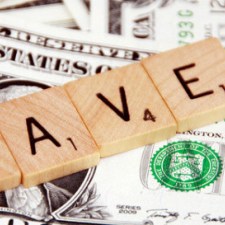Get the Most From Online Shopping
If you can get a better deal shopping at home from your laptop while drinking coffee and wearing your robe, why wouldn’t you? There is a reason a company such as Amazon brings in over 61 billion dollars in yearly revenue, according to their Securities and Exchange Commission filing.
Online shopping is convenient and, if you do it right, might be the best way to get the stuff you need at a price that will boggle your mind.
Don’t Fear the Obscure
As CNET points out, little known deal sites stay that way because other shoppers don’t want to share. We all know if something sounds too good to be true, it probably is, but the stuff that you never hear about is where you find the real treasures. Rely on free sites such as SlickDeals and FatWallet when shopping, for example. These website work as virtual personal shoppers and scour the Internet to locate the best deals.
Don’t give out any personal information to a deal site unless you do your research first. If you are unsure, Google the name to see what people are saying – a scam will show up pretty quickly in the Internet chatter. Also, ask your friends and family about sites they use and trust.
Go High Tech for Real Savings
Once you nail down some interesting websites to help with your online buying needs, extend your toolbox to include shopping apps. CNNMoney recommends Redlaser, a free app available for iOS, android and Windows phones. RedLaser partners with brick and mortar stores and online venues to offer you savings. Use the app when you do go to the store to scan barcodes looking for coupons or as a tool to locate the lowest prices online for things you need.
A Little about Online Safety
Everyone is pretty well schooled these days in online security risks, but online shopping opens up a new avenue for people looking to steal. That doesn’t mean you should avoid all things e-commerce, just use caution.
- Look for the SSL Icon – When paying for anything online, make sure the vendor is offering a secure connection. If the site has SSL, secure socket layer encryption, you will see a lock in the address bar at the top of the computer screen. The web address will begin with “HTTPS” instead of “HTTP,” too.
- Use Common Sense – An e-commerce site will not need much more information than a brick and mortar store. Obviously, you must give them a shipping address and a way to contact you. They need your credit card digits to process the payment, too. What they don’t need is your social security number or ATM PIN. Any site asking for that level of detail is suspect.
- Keep an Eye on your Account – Most online payment processing systems will put a hold on funds or process the payment within a few minutes. Go to your bank website and log in to see what transactions go through. Some banks offer email alerts transactions, as well. This is how you check up on the vendor to make sure you are only paying for what you order.
Watch for other transactions to go through over the next few weeks. If you see a charge for something you didn’t order, contact the bank and the seller immediately. Stay on top of security issues with by subscribing to video channels on blogs from industry experts like LifeLock on Youtube.
Don’t Buy in Public
If you don’t have access to a secure network, than online shopping is not for you. Don’t order things from the coffee shop or a library computer, for example. Only buy when you are at home, using your own personal secure connection.


